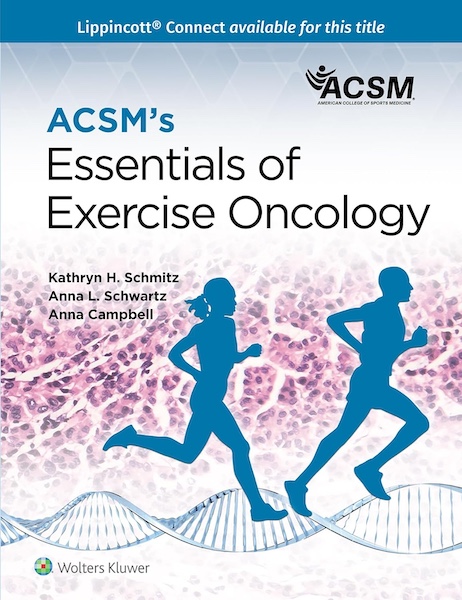Manual of Instructions for the
Schwartz Cancer Fatigue Scale
(SCFS-6)
I. INTRODUCTION
Methodologic problems in the evaluation of cancer-related fatigue have hampered the ability of both researchers and clinicians to assess fatigue in cancer patients and develop interventions to treat and manage the symptom. Previous measures of fatigue are embedded in scales intended to measure other constructs, excessively lengthy or lack adequate psychometric testing. The Schwartz Cancer Fatigue Scale (SCFS) was developed specifically to measure cancer-related fatigue. It is a reliable, valid and parsimonious, 6-item, instrument that measures cancer-related fatigue on a physical and perceptual dimension.
II. DEVELOPMENT AND PSYCHOMETRIC PROPERTIES
Initial psychometric testing of the SCFS was conducted on a sample of 303 subjects who ranged in age from 19-81 (M=48 y.o., SD=11.8 y.o.), and were male (61%), with a diversity of diagnoses and types of treatment. Scale development included testing content validity, internal consistency reliability, sensitivity and construct validity. Latent variable modeling demonstrated that the 6-item scale had 2 factors with three items loading on each factor. All measures of fit were consistently strong (>0.92) and all standardized solution factors loaded strongly (>0.73). The total scale has excellent internal consistency reliability (a>0.9); as do the physical and perceptual subscales (a>0.88 and 0.81 respectively). In this study, the scale discriminated between those subjects receiving treatment and those who completed treatment (p<0.01 for all items) and among groups by the amount of fatigue currently being experienced (p<0.01 for all items).
Additional testing of the properties of the SCFS were examined in a multi-site fatigue instrumentation study. Subjects (N=212) completed the SCFS when CRF was expected to be highest (completion of RT or 2 days after chemotherapy) and again either 4 weeks after the completion of radiation therapy or immediately prior to the next administration of chemotherapy (low fatigue). The mean age of subjects was 56.6 years. Subjects were predominately married (78%) and female (57%), and breast cancer as the most frequent diagnosis (34%). A subset of subjects (N= 37) provided test-retest reliability data 48 hours after the first measure. Complete data were provided by 85% of subjects. Coefficient alpha (.89) and the stability coefficient (r=.69 for the total scale, r=.75 physical, and r=.63 subjective subscale) provide additional support for the reliability and stability of the scale. The SCFS was highly sensitive to change over time (p<.001). Validity of the SCFS was further supported by strong correlations (p<.001 for all measures) with the Profile of Mood States fatigue subscale (r=.71), General Fatigue Scale (r=.77), Lee’s Fatigue Scale (r=.63), Multidimensional Fatigue Inventory (r=-.68), and Multidimensional Assessment of Fatigue (r=.79).
The magnitude of change in cancer-related fatigue as measured by the SCFS was examined over one cycle of chemotherapy or during the month following the completion of radiation therapy in a subset of subjects from the multi-site instrumentation study. Subjects (N=73) were middle aged (M=52.4 +14.2), female (67%), and receiving either chemotherapy (N=51) or radiation therapy (N=22). The mean change from the high point (end of radiation therapy or 2 days post-chemotherapy) to the low point (28 days post-radiation therapy and before the next dose of chemotherapy) was 2.5+ 5.18. Scores for the high point of treatment for the total group ranged from 6 to 29 (Mean=15.03 + 5.64). Scores for the low point ranged from 7 to 26 (Mean=12.5 + 4.91). The observed effect size for the mean change was 0.98 computed by the GLM effect size model. No significant differences were noted by t-test between chemotherapy and radiotherapy groups at either the high or low point in treatment.
The minimally important clinical difference (MICD) in fatigue is the smallest amount of change that indicates a clinically important difference in a patient’s symptom. The MICD was determined using the protocol developed by Jaeschke and colleagues (1989 and 1995). A multisite, prospective, repeated measures design of 103 heterogeneous cancer patients actively receiving treatment were enrolled on the trial. The MICD for measuring decreases in fatigue is -2.1, increases in fatigue is 5.7 and overall, for the whole scale is 5.0. Effect size in this study was 0.71. (Schwartz, Meek et al, 2002).
III. ADMINISTRATION
It should be noted that subjects in all of these studies completed the questionnaires either in a clinic, inpatient setting or at home. The mailed responses contained minimal missing data which suggests that the instrument is easy to complete and is appropriate for use in research, clinical and home-based settings. The 6-item scale is brief, to minimize respondent burden in a group of patients known to be affected by fatigue. Time to complete the scale ranges from 1 to 2 minutes.
IV. Examples of Current Usage
The SCFS is being used in to examine fatigue in patients with diabetes, HIV, arthritis and pulmonary diseases. Users of the scale are translating it into different languages and testing the psychometrics of the instrument in Chinese, Thai, German, etc. It has been well accepted and is also being used by large clinical trials groups in the U.S. (e.g. Southwest Oncology Group, Radiation Therapy Oncology Group, Eastern Oncology Group).
IV. SCORING
Total scores are derived by summing the items. Scores range from a minimum of 6 to a maximum of 30. The SCFS has only been tested using the “2-3 day” time frame. Any modifications to the instrument must be made only with the written consent of the developer.
V. DUPLICATION OF THE SCFS
The SCFS can be duplicated and used at no charge. The author requests the use of basic demographic (age, sex, and nationality), diagnosis and treatment information, and copies of the completed SCFS for inclusion of data into the database. Individuals wishing to use the form are asked to complete and return the following permission form and appropriately cite and acknowledge.
Correspondence should be directed to:
Anna L. Schwartz, PhD, FNP-BC, FAAN
Coleman Heath, LLC
PO Box 50146
Parks, AZ 86018
928-202-1315
FAX 307-204-7970
e-mail annalschwartzphd@gmail.com
REFERENCES
Schwartz, A.L. Meek, P.M., Nail, L.M., Fargo, J., Lundquist, M., Donofrio, M., Grainger, M., Throckmorton, T., Mateo, M. (2002). Measurement of fatigue: Determining minimally important clinical differences. J. Clinical Epidemiology, 55, 239-244.
Schwartz, A.L. (2000). Schwartz Cancer Fatigue Scale. In, O. Strickland, & C. DiIorio (Eds.), Measurement of Nursing Outcomes: Client Outcomes. Springer Press.
Schwartz, A.L. (1998). Reliability and validity of the Schwartz Cancer Fatigue Scale. Oncology Nursing Forum,25, 711-719.
Schwartz, A. & Meek, P. (1999). Additional content validity of the Schwartz Cancer Fatigue Scale. Journal of Nursing Measurement, 7, 35-45.
Schwartz, A.L. (1998). Overall change in cancer treatment-related fatigue as measured by the Schwartz Cancer Fatigue Scale (SCFS). Presented at the Nursing Research Conference: Research for Clinical Practice, January 22, Tucson, AZ.
Schwartz, A.L. (1997). Reliability and validity of the Cancer Fatigue Scale. Paper presented at Oncology Nursing Society annual meeting, New Orleans, May.
Nail, L.M. (1997). Measurement reliability, validity, stability and sensitivity in cancer treatment-related fatigue: Instrumentation evaluation results of the Fatigue Initiative for Research and Education Project-phase 1. Unpublished data, University of Utah.
Jaeschke R, Singer J, Guyatt GH. Measurement of health status: ascertaining the minimal clinically important difference. ControlledClin Trials 1989;10:407–15.
Jaeschke R, Guyatt GH, Shannon H, Walter S, Cook D, Heddle N. Basic statistics for clinicians: 3. Assessing the effects of treatment: measures of association. CMAJ 1995;152:351–7.
PERMISSION FOR USE OF THE
SCHWARTZ CANCER FATIGUE SCALE
Unless other arrangement have been made, please sign the permission agreement and email to: annalschwartzphd@gmail.com
I ___________________________________________ am requesting use of the Schwartz Cancer Fatigue Scale (SCFS-6). I understand there is no charge to me for its use. I agree to send 1) copies of the completed form (unless otherwise negotiated); 2) a description of the patient population (e.g. diagnosis, stage); 3) a description of the patient (age, sex, nationality); and 4) a description of the type of treatment the patient was receiving for inclusion in the database. I understand the author will not disclose the source of the data by naming the facility without prior permission from me.
Signed _______________________________________________________________
Institution ____________________________________________________________
Address ______________________________________________________________
Telephone Number _____________________________________________________
Schwartz Cancer Fatigue Scale
SCFS-6
The words and phrases below describe different feelings people associate with fatigue. Please read each item and circle the number that indicates how much fatigue has made you feel in the past 2 to 3 days.
1 = not at all
2 = a little
3 = moderately
4 = quite a bit
5 = extremely
Tired …………………….. 1 2 3 4 5
Difficulty thinking ……… 1 2 3 4 5
Overcome……………….. 1 2 3 4 5
Listless …….……………. 1 2 3 4 5
Worn out ……………….. 1 2 3 4 5
Helpless …………..……. 1 2 3 4 5
Ó1997 A. L. Schwartz. Permission for use required.




